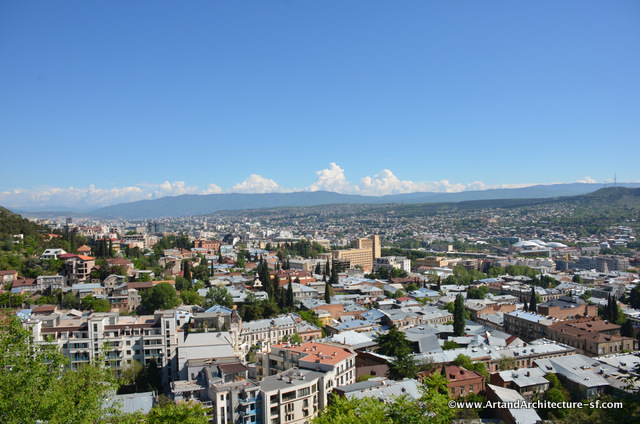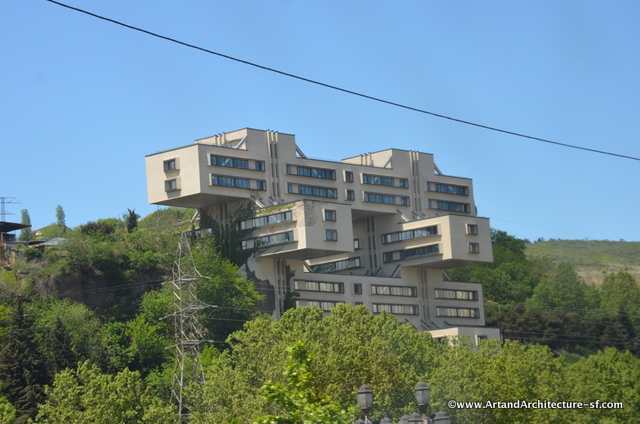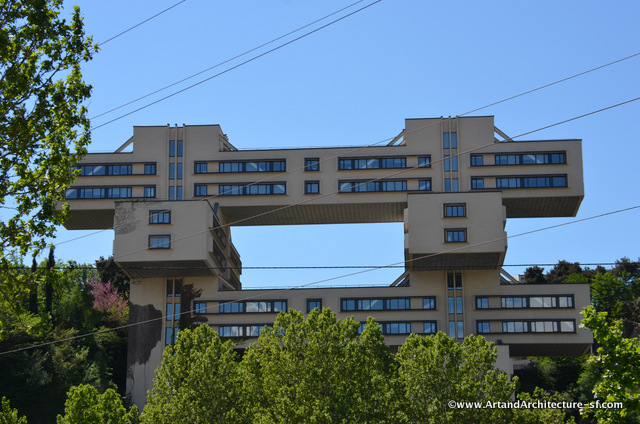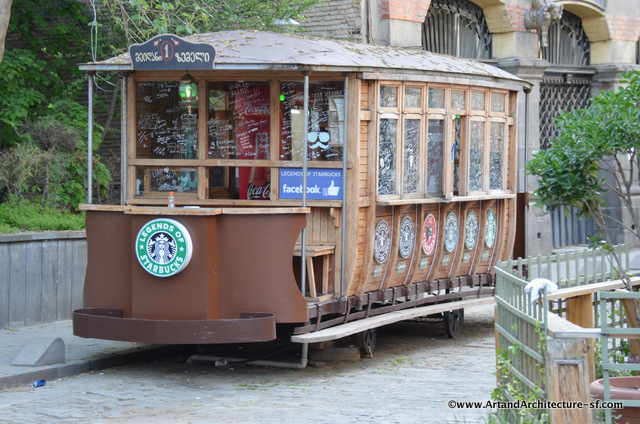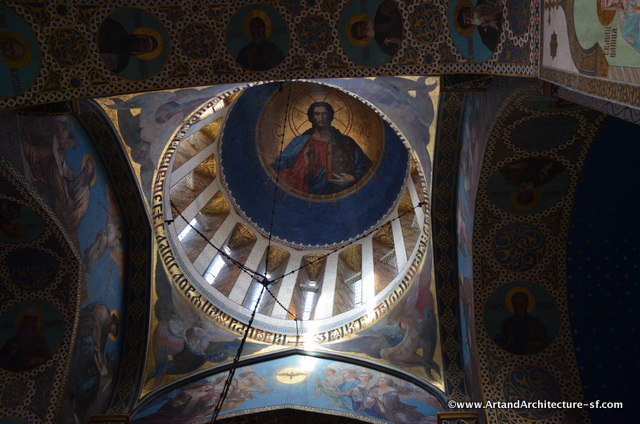May 122014
Tblisi is the capital and the largest city of Georgia. The Mtkvari River runs through the middle of it and it has a population of roughly 1.5 million people. Tblisi was founded in the 5th century by the monarch of Georgia’s ancient precursor Kingdom of Iberia, and has served, with various intervals, as Georgia’s capital for more than a thousand years.
Tbilisi is diverse culturally, ethnically, and religiously, though it is overwhelmingly Eastern Orthodox Christian.
Our accompanying professor calls it the home of a million churches and a million hammams.
Hammams, (Turkish Baths) in the oldest part of town
According to old legend, the present-day territory of Tbilisi was covered by forests as late as 458. One day King Vakhtang I Gorgasali of Georgia went hunting in the region with a falcon. The King’s falcon allegedly caught a pheasant during the hunt, after which both birds fell into a nearby hot spring and died. King Vakhtang became so impressed with the hot springs that he decided to cut down the forest and build a city on the location. The name ‘Tbilisi’ means warm location.
This hawk statue is just to the right of the baths above and is truly one of the most beautiful sculptures I have seen, sadly the light at the time of day we were there was very poor and you need to walk all around it to really appreciate it.
Tblisi’s great location meant that the King wasn’t meant to stay in power for long. From 570–580, the Persians took over Tbilisi and ruled it for about a decade. In the year 627, Tbilisi was then sacked by the Byzantine/Khazar armies and later, in 736–738, Arab armies. The Arab domination of Tbilisi continued until about 1050. In 1068, the city was once again sacked, only this time by the Turks.
In 1122, King of Georgia David the Builder entered Tbilisi. He drove out the turks and inaugurated Georgia’s Golden Age from the 12-13th centuries. Then you have the Mongols, the Persians and of course, the Russians.
Georgia gained independence during the breakup of the Soviet Union. They have internal problems and strife with Ossetia, but they get along just fine with the Armenians and the Azerbaijanis.
The country does not have the wealth of Azerbaijan. Their primary income is from their expatriate community sending money back home. Their largest expat community is in Russia. They suffered horribly during the 1990’s and are still suffering. Many museums are closed due to lack of funds, and according to our accompanying professor, fields such as archeology just don’t have the funding to be supported in a manner that should be, to keep them up with international standards.
The photo above shows the Holy Trinity Cathedral of Tbilisi it is the main Cathedral of the Georgian Orthodox Church. It was constructed between 1995 and 2004, it is the third-tallest Eastern Orthodox cathedral in the world. In front of that the building with the blue (glass) dome is the presidents home, and the two ultra-modern buildings, still under construction will be an art gallery, and I am not quite sure what else.
Looking down into town, from the feet of Mother Georgia.
This is the headquarters of the Bank of Georgia. Designed by architect George Chakhava, parts are lifted off the ground so nature can grow beneath.Its structure resembles Russian constructivists from the 1920’s but has a bit of Brutalism thrown in for fun. I just love it, but I know it may not be everyone’s cup of tea.
I don’t know if this was or was not a real Starbucks, but this was an authentic old horse-drawn tram car.
This is a Tamada, or Georgian Toastmaster. Georgians like to say that the tamada is dictator of the table, but it would be more appropriate to compare him to a leader or even a teacher. Tamada ought to be eloquent, intelligent, smart, sharp−witted and quick−thinking, with a good sense of humor because very often some of the guests might try to compete with him on the toast making. This particular guy is modeled on an old Colchian statue. (6th to 1st century BC)
We have, and most likely will visit many old churches along the way. Above is the dome of Sioni cathedral which shelters the Cross of St. Nino the woman that brought Christianity to Georgia.
The cross on the top of 13th century Metekhi Church of the Virgin, this church was built on the site of David the Builders former palace.
There are approximately 2500 jews in Tblisi happy to show off their beautiful synagogues.
And the entire town is looked over by Kartlis Deda created by sculptor Elguja Amashukeli. This sixty foot tall aluminium figure is of a woman in Georgian national dress. She symbolizes the Georgian national character: in her left hand she holds a bowl of wine to greet those who come as friends, and in her right hand is a sword for those who come as enemies





